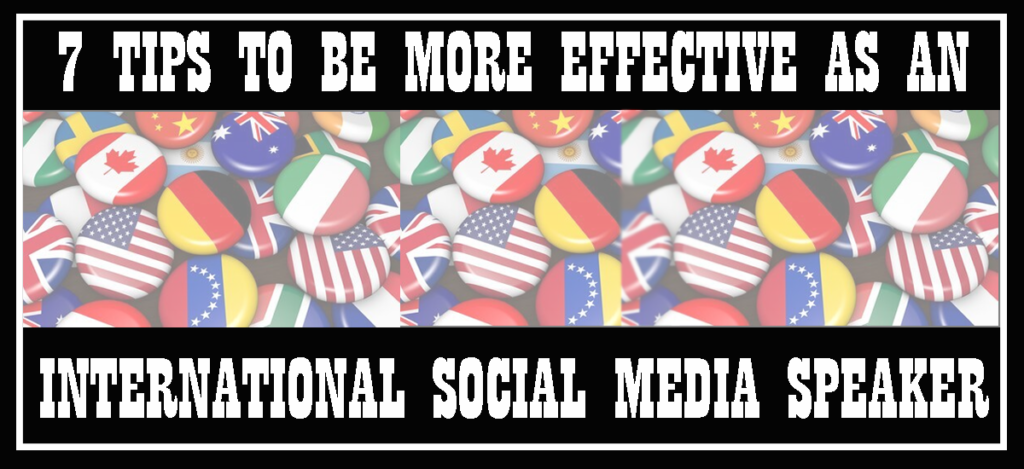I’ve had the opportunity to travel the world as a keynote speaker on social media, branding, customer service and marketing strategy. When it comes to speaking about a topic like social media or marketing it can be challenging to make sure that your presentation is culturally relevant – especially if you are speaking in a country that you are less familiar with.
Here are some tips to make your international social media presentations relevant for all audiences.
1) Talk to people before the presentation to learn about the culture
- I like to arrive at least one day early and try to talk to people about the topic I will present on. This gives me a feel for any issues that are unique to their culture, and also increases my confidence that my presentation makes sense for them.
- For example, I recently gave a social media presentation in the Caribbean. Prior to the presentation I met with the organizers and talked to them about the social media sites that they use, what they see happening, etc. Since the country was so small I wasn’t able to find data when I did my research in advance, so this conversation really helped me to prepare.
2) Speak SLOWLY and enunciate
- For international audiences it is important to remember that English may not be the first language of the audience. Speak SLOWLY. I try to speak as slowly as possible, enunciate and choose small words when working with an international audience. This helps them to follow the presentation better since they have to translate everything that I say.
3) Use local examples
- Using local examples shows that you are willing to make an effort to understand the local culture. This is always a hit in my presentations – it shows that I am prepared, did research and am interested in their culture and market. It also makes the presentation more relatable.
4) Use slides to help relay your key points
- When I speak my slides are usually just visual guides created to support what I am talking about. They aren’t supposed to be read by the audience.
- With an international audience I use my slides differently. It is often easier for people to understand writing vs. speaking, so I use my slides to emphasize key points and make it easier to be understood.
5) Explain more than you normally would
- Be careful about assuming what the audience knows. Remember that they may not be familiar with the examples you use, common terms, etc. Explain anything that the audience may not know.
6) Avoid sarcasm and be careful with humor
- Be careful with humor and sarcasm – jokes often rely on cultural understanding. In a recent presentation I made a few jokes about not understanding the language, which were well received. After the moderator introduced me in Spanish I said that I wasn’t able to understand my introduction, but I trust that she made me sound smart.
- The joke got a laugh from the audience and set the stage for a fun presentation.
7) Use simple words
- One of the most important things is to use simple words. I learned French growing up but have a very limited French vocabulary. I can only understand commonly used words and don’t know many specific industry terms in another language.
- I keep this in mind in my international presentations and choose the simplest words possible. I also try to explain things in a few different ways so that the audience may pick up on a different explanation.
International speaking is a lot of fun, but also represents some unique challenges. I always spend extra time preparing to make the most out of my international speaking events.
































Speak Your Mind